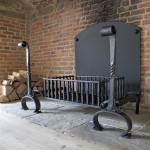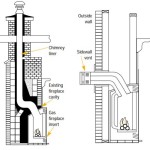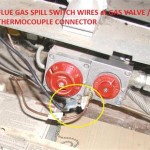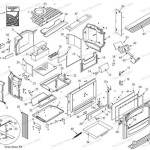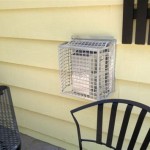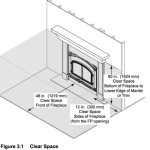Gel Fireplace Wall Units: A Comprehensive Guide
Gel fireplace wall units are gaining popularity as a modern and aesthetically pleasing alternative to traditional fireplaces. These units offer the ambiance of a real fire without the need for venting, gas lines, or electricity, making them a versatile and convenient option for various living spaces. This article provides a comprehensive overview of gel fireplace wall units, covering their features, benefits, installation considerations, maintenance, and safety aspects.
Understanding Gel Fuel and Fireplace Operation
At the heart of a gel fireplace wall unit lies its fuel: a specially formulated gel made primarily of isopropyl alcohol, water, and a thickening agent. This gel is contained within cans or cartridges and, when ignited, produces a clean-burning flame. The combustion process generates heat, carbon dioxide, and water vapor. However, the amount of carbon dioxide produced is significantly less than that of a traditional wood-burning fireplace, and the absence of smoke, soot, and ash eliminates the need for a chimney or flue.
The operation of a gel fireplace wall unit is straightforward. The user typically removes the lid from the gel fuel can and places it within the designated burner chamber of the fireplace unit. Using a long lighter or match, the gel is ignited. The flame will typically burn for several hours, depending on the size of the fuel can and the design of the burner. To extinguish the flame, the user may use a snuffer tool specifically designed for gel fireplaces or carefully replace the lid on the fuel can to starve the flame of oxygen.
It is crucial to use only gel fuel specifically designed for gel fireplaces. Using other types of flammable liquids or gels can be extremely dangerous and may result in explosions or uncontrolled fires. Always follow the manufacturer's instructions regarding fuel usage and handling.
Advantages of Gel Fireplace Wall Units
Gel fireplace wall units offer several advantages over traditional fireplaces and other types of alternative heating solutions. These advantages contribute to their increasing appeal among homeowners and renters alike.
One of the primary benefits is the absence of venting requirements. Unlike wood-burning or gas fireplaces, gel fireplaces do not produce harmful emissions that require a chimney or flue. This allows for greater flexibility in placement, as the unit can be installed on virtually any wall without the need for extensive construction. This is particularly appealing for apartments, condominiums, and homes where installing a traditional fireplace would be impractical or impossible.
Another significant advantage is their ease of installation and use. Gel fireplace wall units typically require minimal assembly and can be mounted on a wall using basic tools. The fuel canisters are readily available for purchase at many home improvement stores and online retailers. The simple ignition and extinguishing process makes them easy to operate, even for those unfamiliar with traditional fireplaces.
Moreover, gel fireplace wall units offer a cost-effective way to add ambiance and supplemental heat to a room. While they are not intended to be a primary heat source, they can provide a noticeable warming effect in smaller spaces. The cost of gel fuel is generally lower than the cost of gas or wood, making them an economical choice for occasional use. Additionally, the absence of electrical components eliminates the need for wiring and reduces energy consumption.
Finally, gel fireplace wall units are available in a wide variety of styles, sizes, and finishes to complement any décor. From sleek and modern designs to more traditional and rustic styles, there is a gel fireplace wall unit to suit every taste. They can be integrated into existing wall structures or used as standalone decorative pieces.
Installation Considerations and Best Practices
While gel fireplace wall units are relatively easy to install, proper planning and adherence to safety guidelines are essential to ensure a safe and enjoyable experience. Before purchasing a unit, it is important to consider the size of the room and the desired placement of the fireplace. The unit should be positioned away from flammable materials such as curtains, furniture, and paper products. A minimum clearance distance, as specified by the manufacturer, should be maintained around the fireplace.
When mounting the unit on a wall, it is crucial to use appropriate hardware and ensure that the wall can support the weight of the fireplace, especially when the fuel canisters are full. If installing the unit on a drywall surface, it may be necessary to use wall anchors or mount the fireplace directly to wall studs for added stability. It is recommended to consult with a professional contractor or handyman if unsure about the proper installation techniques.
Prior to first use, carefully read and understand the manufacturer's instructions. Familiarize yourself with the unit's features, operating procedures, and safety precautions. Ensure that the fuel canisters are properly seated in the burner chamber and that the area around the fireplace is clear of any obstructions.
During operation, never leave the fireplace unattended. Keep children and pets away from the unit to prevent accidents. Do not attempt to refill the fuel canisters while the fireplace is burning or still hot. Allow the unit to cool completely before handling the fuel canisters. Always store gel fuel in a cool, dry place away from heat and open flames.
It is also advisable to install a carbon monoxide detector in the room where the gel fireplace is located. While gel fireplaces produce minimal carbon monoxide, it is always a good practice to have a detector as a safety precaution. Regularly check the batteries in the carbon monoxide detector to ensure it is functioning properly.
Regularly inspect the gel fireplace unit for any signs of damage or wear. Check the burner chamber for any debris or residue and clean it as needed. If any parts of the fireplace are damaged, discontinue use and contact the manufacturer for repair or replacement.
Choosing the right location is also important. While gel fireplaces don't require venting, they do consume oxygen. Therefore, it's recommended to use them in well-ventilated rooms. Avoid placing them in small, enclosed spaces with limited airflow.
Maintenance and Safety Protocols
Maintaining a gel fireplace wall unit is relatively simple, but regular cleaning and safety checks are necessary to ensure optimal performance and prevent potential hazards. Periodically wipe down the exterior of the fireplace with a damp cloth to remove dust and dirt. Avoid using harsh chemicals or abrasive cleaners, as they may damage the finish. Clean the burner chamber regularly to remove any residue or spilled gel fuel. Use a soft brush or cloth to remove any debris.
Before storing the gel fireplace for an extended period, empty the fuel canisters and clean the unit thoroughly. Store the fireplace in a dry place away from extreme temperatures and moisture. Always store gel fuel canisters in a secure location out of reach of children and pets.
Regarding safety, it is paramount to adhere to the manufacturer's guidelines and exercise caution when using a gel fireplace. Never attempt to modify or alter the fireplace in any way. Only use gel fuel that is specifically designed for gel fireplaces. Never use gasoline, kerosene, or other flammable liquids as fuel. Keep a fire extinguisher nearby in case of emergency.
Educate all members of the household about the proper use and safety precautions associated with the gel fireplace. Emphasize the importance of keeping flammable materials away from the fireplace and never leaving it unattended. Regularly review safety procedures with children and ensure they understand the dangers of playing with fire.
Be aware that the glass or metal surfaces of the fireplace can become hot during operation. Avoid touching these surfaces to prevent burns. Allow the fireplace to cool completely before handling or cleaning it.
In summary, gel fireplace wall units offer a convenient and aesthetically pleasing way to add warmth and ambiance to any living space. By understanding their operation, advantages, installation considerations, maintenance, and safety protocols, users can enjoy the benefits of a gel fireplace while ensuring a safe and enjoyable experience.

Gel Fireplace Indoor Outdoor Fireplaces Wall Mounted Mount

Sei Copper Wall Mountable Gel Fuel Fireplace Mount Electric Mounted

Southern Enterprises Polished Stainless Steel Wall Mount Gel Fireplace Fa5813 Gifts Fireplaces Acces Mounted

Southern Enterprises Morris Copper Wall Mount Gel Fuel Fireplace Electric Mounted

Sei Black Arch Top Wall Mount Gel Fuel Fireplace Mantel Decor

Chelsea Bio Ethanol Wall Fireplace 90298 Mantels Direct

Wall Mount Arch Fireplace Holly And Martin Fireplaces

Patio Outdoor Great Room Wall Hanging Gel Fireplace Stainless Steel

Sterling Bioethanol Fireplace Biofires Com Gel Fireplaces Ltd

Stainless Steel Wall Mount Fireplace Bed Bath Beyond 4042652 Indoor Electric


